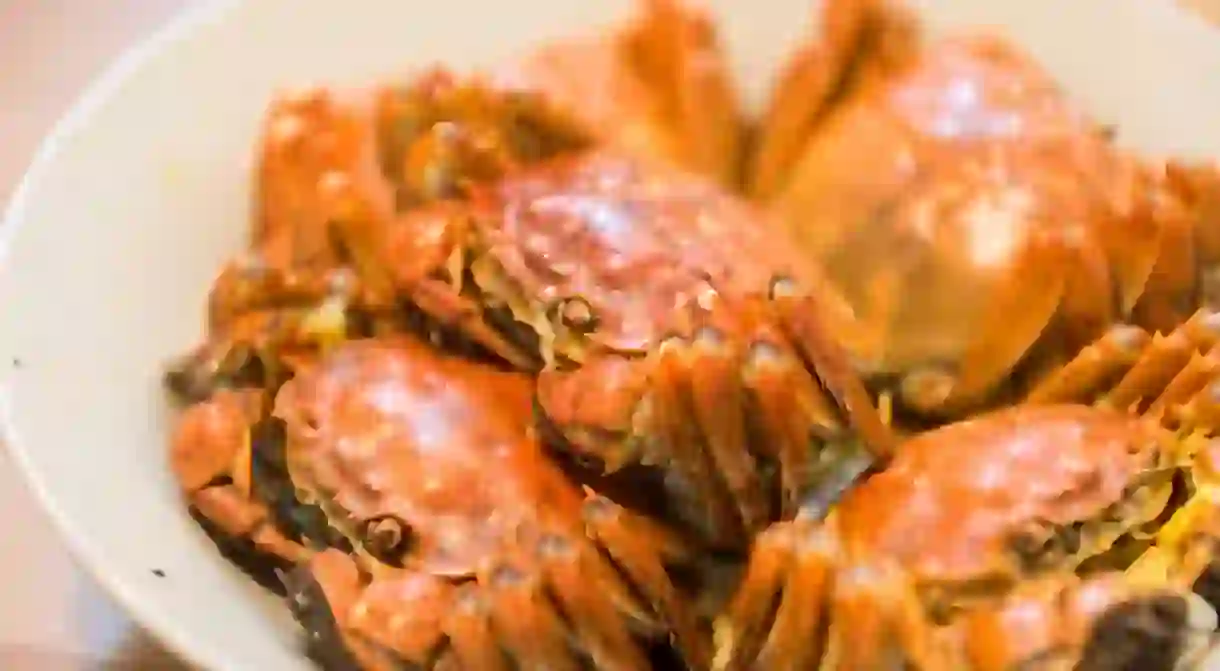Ways to join the hairy crab craze in Shanghai

Hairy crab season (Dàzháxiè, 大闸蟹) is one of the most anticipated culinary events of the year in Shanghai. City citizens (and gourmands around Asia) eagerly wait for that ninth and tenth month of the lunar year – generally between late September and early November – when the crabs are at their fattest and most delectable. Also prized is the bright orange roe inside the males and females, which is gorgeously rich – reminiscent of sea urchin or foie gras. The little crustaceans are, in general, quite small, which makes it time consuming to get to their sweet, silky flesh. But hairy crab enthusiasts don’t care. They’ll spend hours around the table with friends, sucking meat from each tiny leg, sipping warm Chinese brandy (huángjiǔ, 黄酒), and in general reveling in this autumn speciality. If you’re in the city during the season, you’d be silly not to join in on the fun. Here are a few ways to take part in this delicious feeding frenzy – and don’t worry, some dishes let others pick the crab for you.
The classic
Restaurant, Chinese

Soused and served
Restaurant, Chinese
For more adventurous eaters, drunken crab (zuì xiè, 醉蟹)should be a go-to treat. The traditional dish drowns a live crab in a mixture of yellow wine, sugar, salt, oil and vinegar and allows it to sit in the mixture for a full 24 hours. The result is essentially somewhere between crab sashimi and ceviche, the insides turned vaguely gelatinous after its alcoholic soak, and infused through with a saucy marinade. Highly alcoholic, these delicacies are not for children, but adults can enjoy them at Old Jesse’s Restaurant. The long-time local staple is famous for its traditional Shanghainese dishes, and the drunken crab does not disappoint.
A touch of tofu
Restaurant, Chinese

Use the noodles
Restaurant, Chinese
Wrap it up
Combine two Shanghai specialties into one and you have the finest steamed soup dumplings man has ever created. You can find fine dumplings filled with crab meat at the venerable international chain Din Tai Fung (started in Taiwan by a Shanghainese migrant, and now back again). For a more local experience, try the crab roe pork dumplings (xièhuáng xiǎolóng, 蟹黄小笼) at Fuchun Xiaolong Restaurant. This is another one of those venerable old-time places that is always buzzing, and features excellent food and remarkably grumpy service . Go to the front stand, order your dumplings and hand the stub to a roving waitress. Then elbow your way onto a stool. Soon, your basket of goodness will arrive, and world will be right again.
Din Tai Fung, A104 Shanghai Centre, 1376 Nanjing West Road +86 (021) 6289 9182. (More Din Tai Fung locations here)
Fu Chun, 650 Yuyuan Road, Shanghai, China +86 (021) 6252 5117

All-night introductory feast
With all these options, it can be hard to know where to start (Which restaurant? Which end of the body?). To get the crab party going, check out UnTour Food Tours (China’s top-ranked culinary tour company) which has launched a seasonal Shanghai Hairy Crab Feast for the months of October and November. Tastings include two types of crab soup dumplings, wontons in crab broth, lion’s head meatballs crowned with roe, a duo of whole crabs and more. The tour also includes a tutorial on the best way to crack into the crabs, as well as a Chinese brandy pairing.
Check our their schedules here.














